Best KVM based Hypervisors in 2024
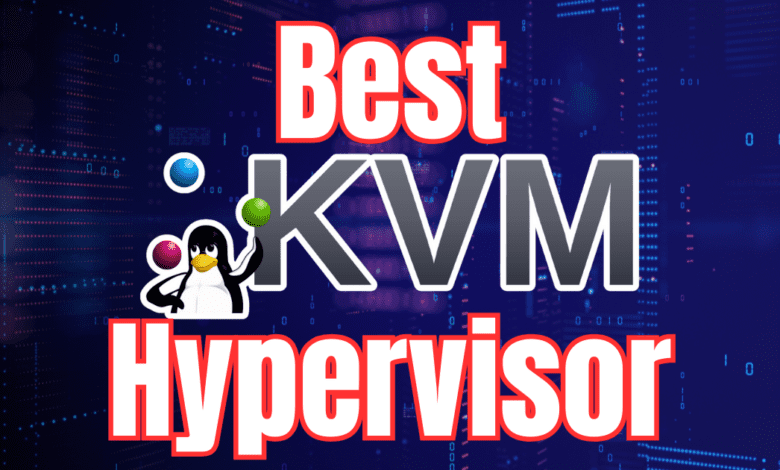
This may very well be the year of KVM-based hypervisors in 2024, aside from other options like Microsoft Hyper-V. Many are looking at different options this year for virtualization technologies to run their enterprise infrastructure on-premises as the fear, uncertainty, and doubt over VMware continues. Let’s look at the best KVM-based hypervisors in 2024, various aspects and benefits to consider and which ones are on the short list.
Table of contents
- Nutanix AHV
- Proxmox VE (Virtualization Environment)
- Red Hat Virtualization (RHV) (now deprecated)
- QEMU
- oVirt
- Verge.io
- Scale Computing HC3
- Virtuozzo
- KVM for IBM z Systems
- OpenStack by Canonical
- OpenNebula
- Apache CloudStack
- LXCs (Linux Containers)
- The Rise of Linux with the KVM hypervisor
- Key Virtualization Workloads Supported by KVM Hypervisors
- Managing KVM Hypervisors
- Wrapping up the best KVM hypervisors in 2024
Nutanix AHV
Many do not realize, but the Nutanix AHV hypervisor is based on the KVM hypervisor. With many looking to transition from VMware, Nutanix is a vendor that stands to win many new customers in 2024. Nutanix has the enterprise polish that many will be looking for in the enterprise data center if migrating from VMware. However, it still may be a pricey option for some in the SMB market.
Nutanix also has a free Nutanix Community Edition you can use in the home lab free of charge and even in a clustered configuration for running multiple operating systems and no memory or CPU cores (processors) restrictions. You are restricted to no larger than a 4-node cluster with community edition.
Read my recent post covering information for building building a Nutanix home lab and the requirements here: Nutanix Community Edition for Home Lab.
- Pros:
- Fully integrated with Nutanix’s ecosystem for streamlined operations.
- Offers a community edition license that anyone, including home labbers can access.
- Simplifies management with a user-friendly interface.
- Has the enterprise polish compared to competitors many may be looking for when moving from VMware with the ability to run business critical workloads with full support and documentation for troubleshooting, efficiency, security features, integrations, disaster recovery, stability, reliability, network configurations, usability, and support.
- Can run on a variety of hardware choices
- Nutanix clusters provide comparable features to VMware vSphere server virtualization when it comes to user interface, capabilities to reduce downtime, provide business needs, and environments for developers
- Great monitoring built in to view resource usage and insights into hardware health, CPUs, capacity, devices, etc
- Easily create networks
- Paid version has access to Nutanix Move utility for VM migration (I’m working on finding out if the community can get access to this tool without a login).
- Cons:
- Primarily optimized for Nutanix environments, which might limit its use in diverse IT landscapes.
- Some advanced features require a deep understanding of the Nutanix ecosystem.
- Can be expensive for enterprise environments. However, with the recent 10x or so price hikes with VMware by Broadcom, Nutanix prices may not seem so extreme for running virtualization hosts and migration from VMware.
Proxmox VE (Virtualization Environment)
Proxmox VE is one of the most popular open-source virtualization solutions in the home lab and is gaining a lot of steam in the small or SMB market. It combines KVM and LXC containers, storage, and networking functionality in a single platform that provides scalability and is extremely easy to use and is free to downoad. It does support both enterprise and cloud environments allowing multiple operating systems running in virtual machines on your own private virtualized hardware in your virtual environment.
Proxmox version 8 provides new features like software-defined networking (SDN) compared to previous versions of Proxmox VE. Companies can use Proxmox as one of many alternatives to run KVM for business critical infrastructure.
- Pros:
- Open source and free distribution to use, with optional paid support.
- Unlike some FOSS hypervisors, you don’t have to have paid support for updates
- You can run Proxmox on new CPU architectures like the “big little” Intel chips and it handles these without issue (may need a microcode update)
- Offers an all-in-one solution with virtual machines, LXC containers, and software-defined storage.
- Provides a web-based management interface that’s accessible, feature-rich, and provides a good user experience.
- Many IT professionals run Proxmox VE on a host machine at home for home lab.
- Many use it for a Windows 10 workstation with GPU passed through
- Can freely use Ceph storage for the purpose of HCI which has many advantages in comparison with other HCI solutions in the FOSS community.
- IT staff have access to free backups using Proxmox Backup Server (PBS) for application backup and protecting and capturing state of your workload instances
- Easily create templates for images and snapshots for quick rollbacks. In addition, Proxmox also supports snapshots with memory
- Cons:
- Some enterprise features and support are behind a subscription model.
- GPU passthrough can be challenging to configure
- Administration may have a steeper learning curve for users unfamiliar with Linux command-line tools.
- Proxmox customer support hours may not match what some companies need in the enterprise
- Connecting storage can be technical for some admins coming from other platforms using iSCSI and Fibre Channel
- Proxmox networking, settings, and configuring interfaces can be challenging for those new to Linux networking and can lead to issues at times
Red Hat Virtualization (RHV) (now deprecated)
Red Hat Virtualization is well known in the world of IT infrastructure and is built on the foundations of Red Hat Enterprise Linux and oVirt. RHV is designed for enterprise-grade virtualization on a host system running kernel-based virtual machine. It is well known in this space and provides security, scalability, clustering, and management capabilities.
Red Hat Virtualization is now deprecated in favor of Red Hat Openshift to run containers on top of Kubernetes in the enterprise.
- Pros:
- Strong integration with Red Hat’s ecosystem, offering robust support and advanced features.
- High level of security and performance, leveraging SELinux.
- Comprehensive management tools through a user-friendly web interface.
- Well known
- Cons:
- Licensing costs can be high for enterprise use.
- Mostly suited for organizations deeply embedded in Red Hat’s infrastructure.
QEMU
QEMU is a generic and open-source machine emulator and virtualization platform that provides basic virtualization features. It works in tandem with KVM for hardware acceleration and virtualization features.
- Pros:
- Highly versatile, supporting a wide range of guest operating systems.
- Open-source and free to use, making it accessible for personal and commercial use.
- Can run without KVM in emulation mode for non-Linux guests.
- Cons:
- Performance can vary when used without KVM acceleration.
- Requires more technical knowledge to configure and optimize.
oVirt
oVirt is an open-source virtualization management platform powered by Red Hat Enterprise Virtualization technology. It has features for managing virtualized datacenters and cloud infrastructure. In looking at oVirt though it seems little rough around the edges for many of the features ones would be looking for today compared to other solutions on the list. However, for a KVM virtualization solution, it works.
- Pros:
- Open-source with strong community support.
- Offers advanced features for datacenter management, such as high availability.
- Integrates well with other Red Hat products and services.
- Cons:
- The setup process can be complex and time-consuming.
- May require additional hardware resources for optimal performance.
Verge.io
I have seen a lot of advertising from Verge.io since the Broadcom VMware buyout. It sets out to provide a cost-effective VMware alternative. Reading on a few Reddit threads since I have never had my hands on it, there were actually a few people that had used it and the tone seemed positive.
- Pros:
- Simplifies datacenter management with an intuitive interface.
- Offers flexible and scalable virtualization solutions for businesses of all sizes.
- Reduces infrastructure costs with efficient resource utilization.
- Cons:
- As a newer player, it may lack some advanced features found in more established solutions.
- The community and ecosystem around Verge.io are still growing, which may affect support and resources.
Scale Computing HC3
Scale Computing HC3 is HCI that is trying to simplify the process of running your virtualization stack. Youu can use KVM as its underlying hypervisor with HC3 designed for ease of use, high availability, and scalability. It targets small to medium-sized businesses looking for an all-in-one virtualization platform for enterprise and edge.
- Pros:
- Highly integrated system that combines compute, storage, and virtualization in a single solution.
- User-friendly interface makes it easy to deploy and manage VMs without specialized training.
- Offers a self-healing architecture that automatically identifies and corrects infrastructure problems.
- Cons:
- May not offer the same level of granularity in configuration and customization as standalone KVM solutions.
- Primarily targets SMBs, which might limit its applicability for larger enterprises with complex virtualization needs.
Virtuozzo
Virtuozzo is built on top of KVM. It has container technologies also that offer modern application platforms, software-defined storage, and it also has networking services built into the solution. It is designed for service providers and businesses looking to manage virtualized resources and deliver cloud services.
They don’t have a free version for download, but you can download and take advantage of a 14-day trial version release of the software to try out on your own hardware
- Pros:
- Supports both container-based and KVM virtualization for guest operating system deployments, with a wide range of OS support
- Integrates software-defined storage and networking for a complete virtualization solution.
- Offers robust tools for managing virtual environments, including automation and orchestration capabilities.
- Cons:
- The platform’s wide range of features can present a steep learning curve for new users.
- Licensing and pricing models may be complex and require careful consideration cost-effectiveness.
KVM for IBM z Systems
KVM for IBM z Systems is KVM-based and it is designed specifically for IBM’s z Systems and LinuxONE servers. It allows you to run Linux workloads on IBM mainframe hardware. It also uses the security and scale of these systems.
- Pros:
- Leverages the advanced security and scalability features of IBM z Systems.
- Integrates with IBM’s hardware and software ecosystem for optimized performance.
- Cons:
- Specific to IBM’s hardware, limiting its applicability for organizations not using IBM mainframe technology.
OpenStack by Canonical
OpenStack is a cloud infrastructure solution that many have at least heard about or know. It uses KVM as its hypervisor and it has as a goal to help organizations build and manage private clouds with ease, offering flexibility and scalability.
- Pros:
- Provides a flexible and scalable cloud platform with support for various workloads.
- Offers comprehensive management tools through Juju for simplified cloud operations.
- Cons:
- Requires familiarity with Canonical’s ecosystem and tools for optimal deployment and management.
- The setup and maintenance of an OpenStack cloud can be complex for organizations without prior experience.
OpenNebula
OpenNebula is an open-source cloud computing system with KVM as its base hypervisor, as well as other hypervisors. It can set up private and hybrid clouds for organizations. It aims to provide a simple, flexible solution for data center environments.
- Pros:
- Offers a simple, lightweight approach to cloud computing, suitable for both private and hybrid clouds.
- Highly flexible and customizable to fit various deployment scenarios.
- Cons:
- While it supports multiple hypervisors, specific optimizations may be necessary to achieve the best performance with KVM.
- May require more hands-on management compared to more integrated cloud solutions.
Apache CloudStack
Apache CloudStack is also open source and it also supports KVM. It can also support other hypervisors as well, for creating, managing, and deploying cloud services at scale. It’s designed to operate as a cloud orchestration platform for public and private cloud environments.
- Pros:
- Supports a broad range of hardware and hypervisors, including KVM, for versatile cloud deployments.
- Offers robust API and a wide array of features for cloud management.
- Cons:
- The complexity of its full feature set can pose a learning curve for new users.
- Integration and customization can require significant effort and expertise.
LXCs (Linux Containers)
Linux Containers (LXC) are a really good “in-between” solution that sit between Docker containers and full virtual machines with installed operatings. When combined with tools like LXD it presents a lightweight virtualization solution that many like to use. If you want to get your feet wet with LXC, just stand up a Proxmox server and you can spin up LXC containers easily!
You can run LXC containers natively in Proxmox and then also run Docker inside of these LXC containers. They provide an excellent platform for running virtualization environments.
- Pros:
- Very lightweight compared to full virtual machine virtualization.
- Integrates closely with the Linux kernel for efficient resource use.
- Cons:
- Provides a different type of virtualization (container-based) that may not suit all applications that require full VM isolation.
The Rise of Linux with the KVM hypervisor
KVM-based core virtualization infrastructure is made possible by the Linux kernel. The Linux kernel has evolved to support a wide range of virtualization software and new hardware features like hybrid CPU cores running in the new Intel “big little” architecture.
The integration of the KVM hypervisor with the Linux kernel provides efficient computer resource management and enables businesses and home labbers to use multiple cores and computing resources for their virtual machine software. It also helps secure virtual containers for their operations.
I think KVM is set to rise in 2024 with organizations looking at their options and seeing what is available for use with VMware licensing changes and other considerations.
Key Virtualization Workloads Supported by KVM Hypervisors
KVM hypervisors are known for their ability to run key virtualization workloads and apps, including those requiring high performance and scalability.
It leverages hardware virtualization extensions and implements efficient load balancing and processor scheduling. KVM-based solutions enable running multiple operating systems with minimal overhead and loss of performance.
An organization who makes the decision to run KVM will find it will run anything and everything they need to throw at it in terms of virtual machines. It lays the foundation and has the capability to run containerized workloads
Managing KVM Hypervisors
Centralized management is an important consideration for KVM hypervisor platforms. Effective management tools is one of the reasons VMware vSphere has been so successful. It enables administrators to manage multiple virtual machines, allocate resources, and monitor system performance.
Platforms like Nutanix, Red Hat Virtualization, Proxmox, and others, provide advanced system management features and tools that simplify day-to-day operations. I think the management features of these KVM variants will help to make them stand out as choices for the best KVM-based hypervisors in 2024.
Wrapping up the best KVM hypervisors in 2024
I think many are looking at the hypervisor landscape in 2024, especially VMware customers. When it comes to a virtualization platform that supports key virtualization workloads like Windows Server, Linux, and containers in production, KVM-based hypervisors are a great choice.
When we look at the sheer number of solutions that are running on KVM underneath the hood, the choices are many for running virtual operating systems. However, there are many considerations to be made and factors to look at. For example, customers want to look at which solution closely matches their use cases, development, innovation of product, device support, app demands, money and budget considerations, compatibility, and automation processes capabilities with standard tools like Ansible, Chef, and others for provisioning tasks.
A company may also have interest in the creation of VDI environments to replace desktops with PC replacement virtual machines. There are many options that may support the operation of critical processes. However, there are also other hypervisors out there based on the Citrix hypervisor, Oracle, and other distributions that may also be considered for testing and production environments.





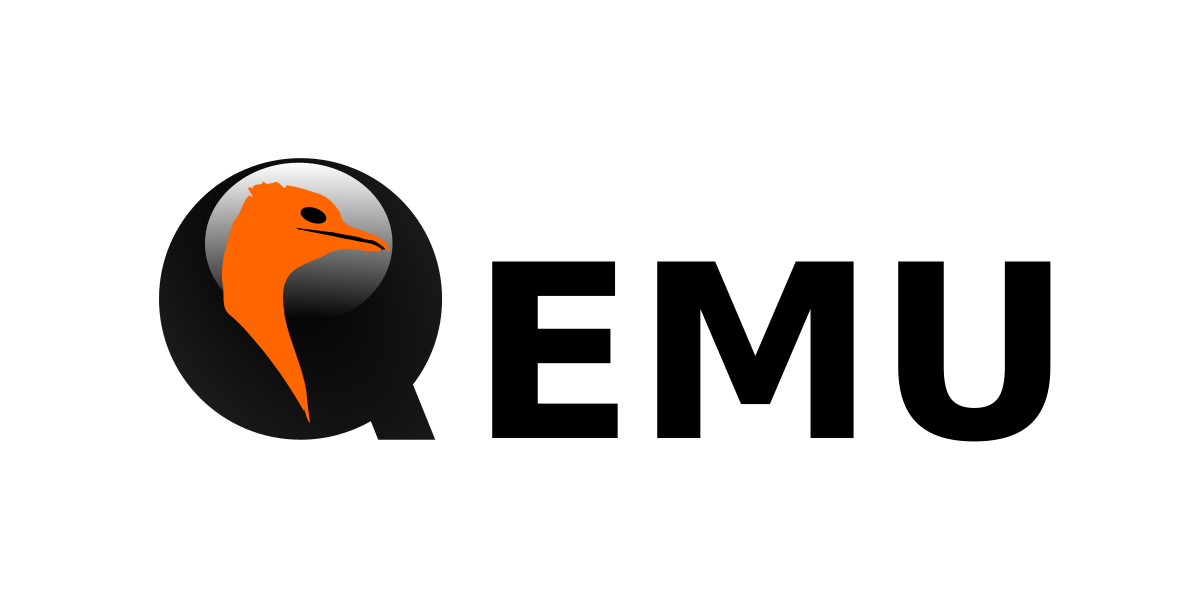




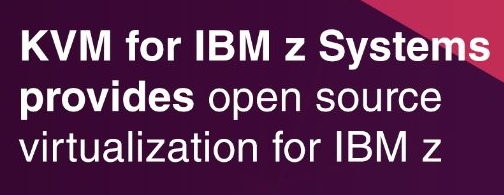






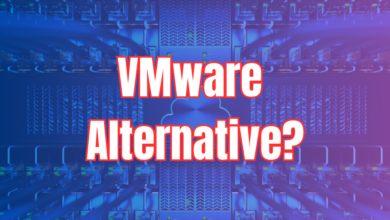
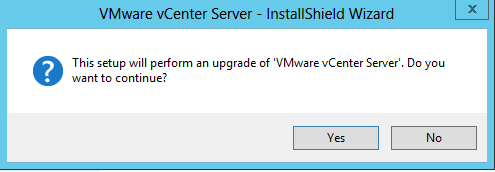
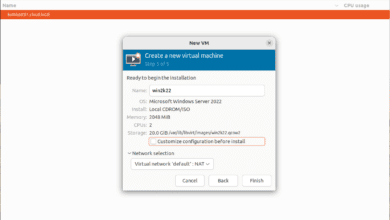



LXD is missing from your list. It’s not just a cli on top of LXC.
It’s a distributed/clustered virtualization system which supports both containers as well as VMs.
The biggest “con” is that it doesn’t have any UI (yet; Canonical is actively working on one).
You might want to give it a more in-depth review.
Freebsd with vm-bhyve, it’s the fastest, most secure, and native zfs for all your VMs. I can zfs rollback any VM I want, run wireguard, firewall, bind, dhcpd etc.
Mostly I toss home assistant in VM, but I have barebones server to run CUDA and AI as well. Can’t really beat it.
Tony,
Thank you for the comment! Good shout on LXD.
Brandon
What about Harvester?
nearly nobody uses it.
I have heard that SUSE is having some problems at corporate level…
And what happened with Open shift or kubevirt?
Miguel,
Thank you for the comment. I was centering around OS’es that are purpose built for virtualization. I agree Kubevirt and Openshift are great and I have written about them. Here we are highlighting mainly hypervisors that are built for this purpose and not as much Kubernetes based virtualization.
Brandon
Você pode me ajudar a descobrir qual seria o melhor otimizado para um servidor de virtualização para games na nuvem?
Red Hat OpenShift with the free OpenShift Virtualization operator add-on, and Red Hat Enteprise Linux (RHEL) KVM, are both missing from your list. Both have free trials available plus we have free Red Hat subs available through our developer program, free to sign up at https://developers.redhat.com/ (scroll down to free Developer membership benefits and how to sign up). OpenShift Virtualization is 100% RHEL KVM under the hood and utilizes the CNCF project kubevirt to provide containers *AND* VMs in one enterprise class platform.
Michael,
I really appreciate your comment and insights. I didn’t realize you can have free developer membership benefits and the ability to use Red Hat OpenShift. I will dig into this and create some content along those lines of the steps, and experiences.
Thanks again Michael,
Brandon